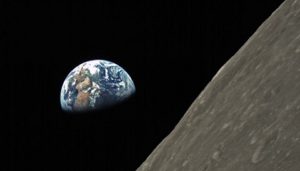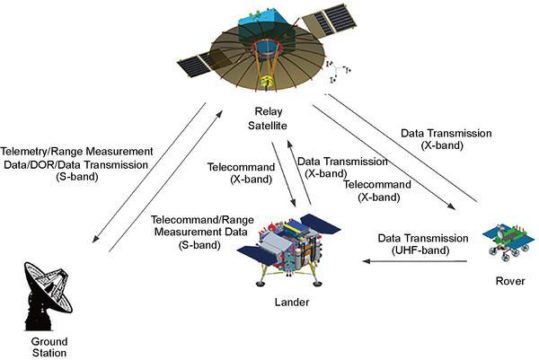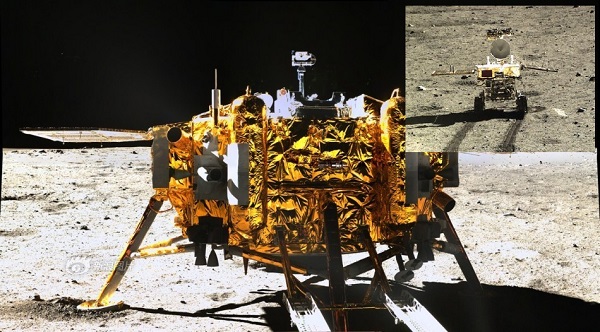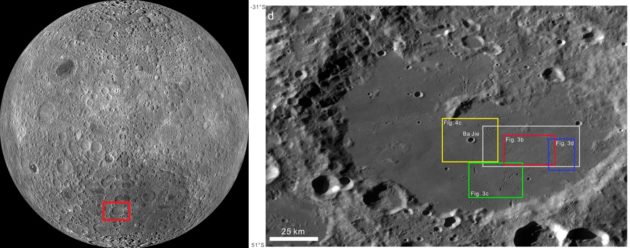China's latest lunar mission will drop a lander and rover in one of the oldest terrains on the Moon, becoming the first craft to intentionally land on and explore the farside.

CNSA / Harbin Institute of Technology
A Long March-3B rocket lifted off today at 18:23 Universal Time (UT) from Xichang space center in southwestern China with Chang'e 4 headed for a first ever soft landing on the lunar farside. Named after the Chinese Moon goddess, Chang'e 4 is the latest mission in China's lunar exploration program.
There's a reason no mission has landed on the lunar farside (though some space hardware has crashed there). The Moon is tidally locked with respect to the Earth, meaning it keeps roughly one hemisphere turned towards us as it orbits, and one turned perpetually away. Line-of-sight communications between the farside and Earth isn't possible. To solve this, China launched the Queqiao mission to head to a lissajous (halo) orbit around the lunar L2 Lagrange point early this year leading up to Chang'e 4, 37,300 miles (60,000 kilometers) beyond the Moon for a dedicated relay.

CAST / ISSE
The Chang'e 4 lander and rover is similar to China's Chang'e 3 lander, which landed at the edge of the Mare Imbrium (Sea of Rains) in 2013 and deployed the Yutu (Jade Rabbit) rover. China's National Space Administration (CNSA) held a student contest to name the Chang'e 4 rover and lander, and we'll probably hear the formal names for each once they've successfully landed on the farside of the Moon. Chang'e 4 carries upgraded instruments that build on the successful Chang'e 3 mission, including cameras and instruments allowing for the study of surface geology, lunar seismology, and the solar wind and its interaction with the lunar surface. China will also use Chang'e 4 to conduct low-frequency radio astronomy and monitor cosmic rays from the radio-quiet lunar farside. A small student experiment aboard Chang'e 4 contains plant seeds, fruit flies, and yeast in an effort to study how the mini-ecosystem fares in the low gravity lunar environment.

CNSA
The mission will now head for a trans-lunar insertion orbit, and will most likely land on or around the first week of January 2019. Chang'e 4 is headed to the South Pole-Aitken (SPA) Basin, a 1,550 mile (2,500-kilometer) wide basin located between the lunar South Pole and Aitken crater. The top priority target is thought to be the 116-mile diameter (187 kilometer) Von Kármán crater. It's likely that Chang'e 4's landing will coincide with lunar sunrise on Von Kármán, which will provide the maximum duration of solar exposure during its first two weeks of operation. That would put the landing date on or around January 3, 2019.

NASA / LRO / Huang Jun
Both the rover and the lander feature solar panels for daytime power and operation, along with nuclear plutonium-238 heaters to keep their electronic components warm during the two-week-long lunar night.
Tales from the (lunar) farside
We got our first good look at the lunar farside on October 7, 1959, courtesy of the Soviet Luna 3 flyby mission. Those first grainy images revealed a surprisingly different terrain than the familiar nearside of the Moon, showing a realm largely devoid of flat maria.
Why go to the lunar farside? The landing site for Chang'e 4 is one of the oldest basins on the Moon, and may contain sections of exposed lunar mantle. Von Kármán crater offers one on the few relatively flat areas for a landing within the otherwise rugged terrain of the farside.
If successful, China will follow up Chang'e 4 with an even more ambitious Chang'e 5 sample return mission, launching sometime in late 2019. China rehearsed the sample return maneuver with its Chang'e 5T1 flyby and Earth return mission in 2014. The heavier sample return mission requires China's new heavy lift rocket, the Long March 5, which failed on its second launch last year.
China's space program is often an enigma, with information on successful launches and landings announced days later. A successful lunar farside landing would bring considerable prestige to the ascendant Chinese space program, and the Chang'e 4 mission will be one to watch shortly after the coming New Year.

Editor's note (January 14, 2019): This story was updated to say that the student experiment was carrying plant seeds, fruit flies, and yeast, according to the Chinese news agency Xinhua.
 0
0









Comments
You must be logged in to post a comment.